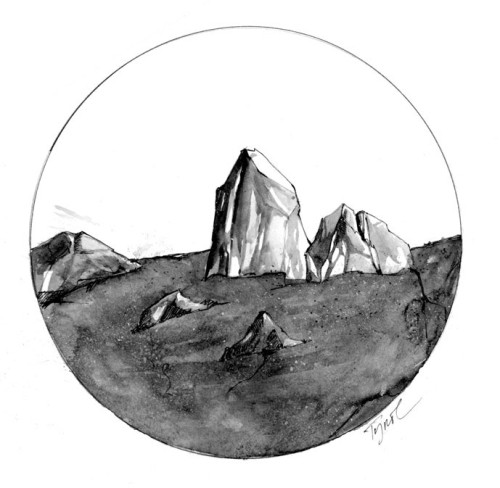
Tom Mortimer of Amherst, N.H., an avid amateur mineral collector, has the most complete collection of New Hampshire minerals anywhere in the state. Most of the time his tabletop-sized display case of nearly 300 minerals is stored in his home office, but several times a year he packs it up and displays it at mineral shows.
On one shelf sits an orange, lopsided square-shaped crystal of xenotime that was collected in Bethlehem. Xenotime contains the rare earth element yttrium in its chemical structure. You can’t see the yttrium in the crystal any more than you can see the sodium in table salt, and even the crystal itself is hard to see. It’s 0.6 millimeters across, too small to be seen clearly without a magnifying glass. But the pink-orange rock collected nearby – about the width of a dime – is considered a massive example of its kind. It is fluocerite, which contains the rare earth element cerium.
Yttrium, cerium, and other rare earth elements are in the news. China’s got them. The United States needs them. The future is made of rare earth.
When I took Chemistry 101 in 1981, the professor waived off that stack of elements that broke the periodic table’s neat pattern of rows and columns. These “rare earth” elements were not for beginners. So he didn’t mention that samarium, a rare earth element, was responsible for the Sony Walkman, the iPod of its day. Super-powerful samarium magnets let Sony shrink a tape player down to the size of a small paperback book, light enough to stash in a backpack to listen to between classes.
Today, neodymium, gadolinium, dysprosium, and praseodymium magnets – all made from rare earth elements – have joined samarium magnets to make possible many of the high-tech gadgets we take for granted today. Prius motors, portable DVD players, iPhones, cell phones, laptops, fiber optic cables, wind turbine rotors, and surgical lasers all utilize rare earth elements.
Ninety percent of rare earth minerals are mined in China. The funny thing is, though, that rare earth elements are not rare. Cerium is the 25th most abundant element on Earth, nearly as common as lead. What makes rare earth elements difficult to come by is that they are generally not found in veins or lodes. To use the rare earth elements in those rocks from Bethlehem, for example, you would need to first separate the rare earth mineral-bearing crystals from the other material, then, using a chemical process, remove the rare earth elements from the mineral.
While it can’t compare to China or California, our domestic rare earth hot spot, New Hampshire contains an abundance of rare earth elements. At least 11 minerals that contain rare earth elements are found in the state. Bethlehem’s Grafton County and the region around Keene, New Hampshire, are both known among local mineral collectors as good places to look. But there is little chance that rare earth minerals will ever be mined commercially in New Hampshire, as they are present in such tiny quantities that it would be too time-consuming and expensive to extract them here.
While mining may be out of the question, New Hampshire has left its mark on the mining industry, as the technique used to purify rare earth minerals was developed at the beginning of the twentieth century by chemist Charles James at the University of New Hampshire.
The situation could not be more different in Vermont, a reminder that while we may think of Vermont and New Hampshire as twin states, geologically, they are anything but.
For Ray Coish, professor of geosciences at Middlebury College, rare earth elements in Vermont’s rocks provide fingerprints that show him where those rocks were formed. In Vermont, rare earth elements are mere traces within minerals dominated by other elements, but by comparing the signature of the rare earth elements, the grand story of Vermont’s geologic history – with oceans ebbing and continents colliding – can be reconstructed.
For example, Coish says there are rocks in Vermont that bear the same signature of rare earth elements as rocks recently formed in volcanic eruptions under the ocean. The identical signatures tell us that the Vermont rocks were formed in volcanoes that erupted under a long-gone ocean 400 to 500 million years ago, even though they now sit on the state’s mountainsides.
Many of Coish’s students have chosen to study rare earth elements for their senior thesis. They search Vermont’s mountains for rocks they can analyze for traces of rare earth, likely toting more rare earth in the iPads and cell phones in their backpacks than they’ll ever find in their studies.

